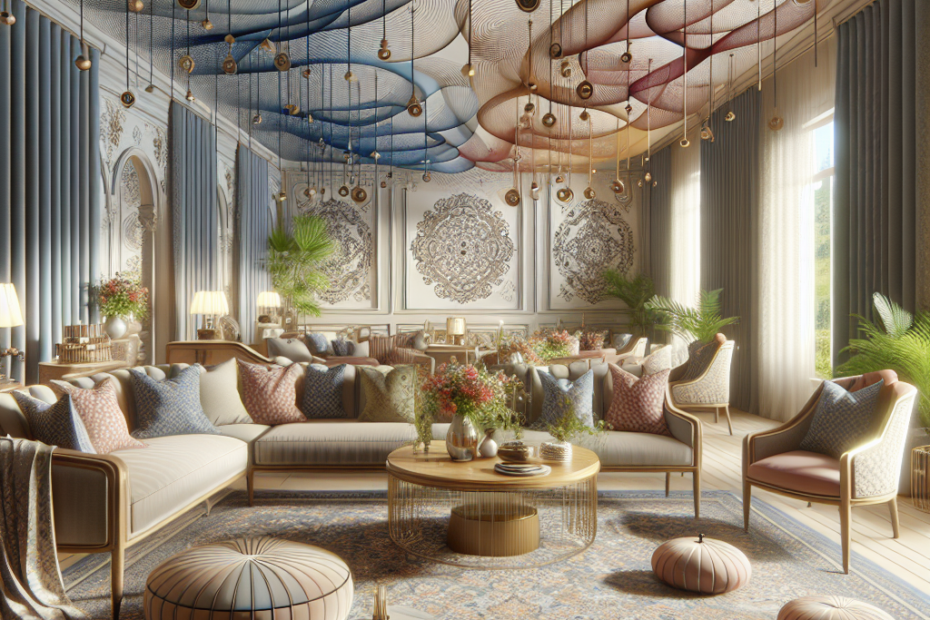“`html
Understanding Repeating Design Elements
Repeating design elements are vital components in design that contribute to creating a sense of harmony and consistency in visual presentations. Designers often use these elements to guide viewers through their work, ensuring that the overall layout feels cohesive and purposeful. By strategically placing repeating design elements, designers effectively manage the layout space, highlight key messages, and keep the audience engaged.
The Role of Repeating Elements in Design Flow
Flow in design refers to how well the viewer’s eye moves across the design. Using repeating design elements creates a rhythm that encourages this movement. When elements like shapes, colors, or patterns recur in a predictable manner, they build a navigational pathway, making content easier to digest and more appealing to the eye.
- Visual Consistency: Consistent visual elements make the design feel more unified.
- Viewer Engagement: A rhythmic pattern keeps viewers interested, leading them naturally through the design.
- Highlighting Information: Repeating elements can spotlight important areas, directing viewer attention.
Statistics on Repetitive Design and Audience Engagement
A study by Adobe revealed that 38% of people stop engaging with a website if the content or layout is unattractive. This highlights the importance of well-placed design elements that can enhance user experience. Additionally, research by Kissmetrics indicates that a harmonious design increases user time on a webpage by 15-20%, proving that flow plays a significant role in retaining attention. These statistics underscore the power of repetition in design.
Steps to Create Effective Flow Using Repeating Elements
Designers should approach the use of repeating design elements with a clear strategy in mind. Here are some steps to ensure they get it right:
1. Choose a Primary Element
Identify the design element you want to repeat. It could be a particular shape, icon, or color. Ensure that it aligns with the brand’s identity and message.
2. Define the Pattern
Decide how and where this element will appear throughout the design. Will it border images, or weave through the text? Establish a pattern that not only repeats but also complements other design components.
3. Maintain Balance
While repetition is key, maintaining a balance is crucial. Overuse can lead to a chaotic appearance. Balance the repeating elements with other visual breaks to avoid overwhelming the audience.
4. Use Varied Scales
Vary the size of the repeating elements to add interest and prevent monotony. For instance, an element used as a large watermark can also be used as a small bullet point, providing flow without redundancy.
5. Monitor Audience Feedback
Utilize analytics to gauge audience interaction with your design. Observing user behavior can offer insights into what elements work and which areas need refinement.
| Benefits of Repeating Design Elements | Description |
|---|---|
| Enhances Visual Consistency | Makes the design look more cohesive and unified. |
| Improves Viewer Engagement | Keeps viewers interested through rhythm and repetition. |
| Guides Viewer Attention | Points out key information and leads the viewer through the design. |
| Reinforces Branding | Repeats visual aspects that are tied to brand identity, strengthening recognition. |
Key Takeaways
- Repeating design elements are crucial for creating a cohesive and engaging visual flow.
- These elements guide the viewer’s eye and enhance the overall visual experience.
- Statistics show that harmonious designs increase user engagement and retention rates.
- To be effective, repetition must be balanced and strategically implemented.
FAQ Section
- What are repeating design elements?
Repeating design elements are visual components like shapes, patterns, or colors that recur consistently throughout a design to create unity.
- Why are repeating elements important in design?
They provide a consistent look, guide viewer attention, and help highlight important information, making the design more engaging.
- Can repeating elements be overused?
Yes, overusing repeating elements can create clutter and confuse the viewer, undermining the design’s effectiveness.
- How do I decide which element to repeat?
Choose an element that aligns with the overall brand message or purpose of the design, and that complements other design components.
- Do repeating elements work for digital media only?
No, they can be effectively used in both digital and print media to create a sense of flow and coherence.
“`
This article is designed to be informative and accessible, with a focus on the importance of repeating design elements and practical advice on their application. The layout provides structured insights into how repetition can enhance design effectiveness, supported by statistics and easy-to-follow steps.
